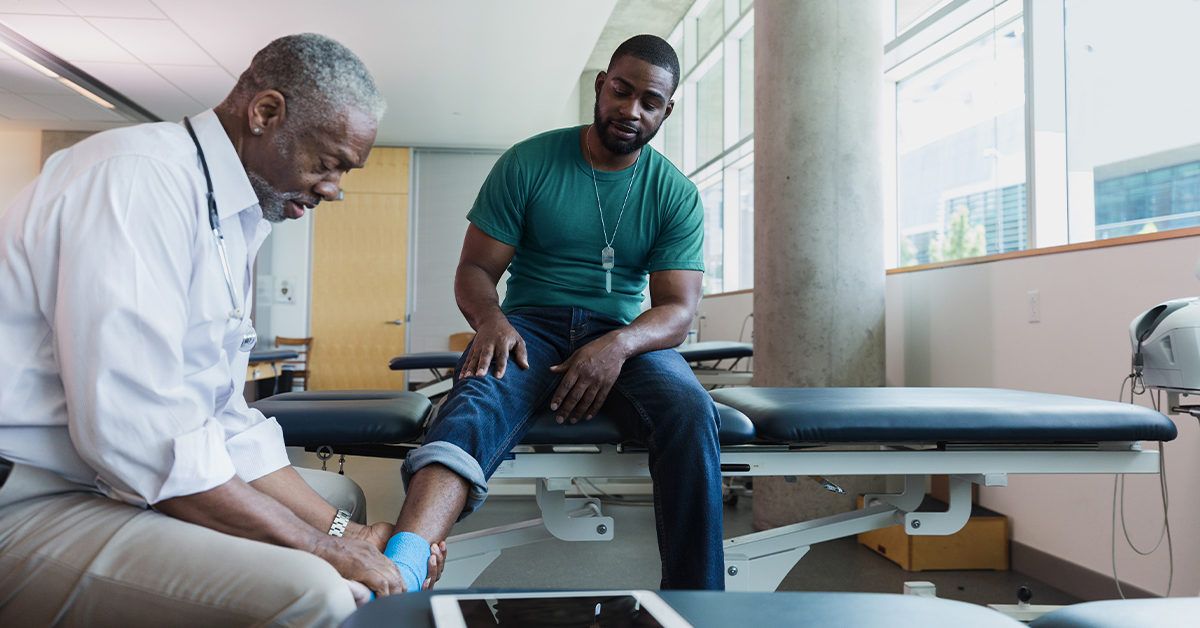Axis Spine And Orthopedics - Truths
Wiki Article
Not known Details About Axis Spine And Orthopedics
Table of ContentsAn Unbiased View of Axis Spine And OrthopedicsLittle Known Facts About Axis Spine And Orthopedics.The Definitive Guide for Axis Spine And OrthopedicsIndicators on Axis Spine And Orthopedics You Need To Know
An orthopedic specialist is a physician that specializes in dealing with problems of the bones, joints, and connective tissues, and guaranteeing you preserve a healthy bone and joint system., we have very qualified orthopedic doctors that are capable of dealing with individuals of all ages. I got included in research throughout my first year of medical college, and I started making links with orthopedic surgeons early on.
Talk about the post-operative treatment strategy with your doctor. Set up for transport to and from the hospital on the day of surgical treatment.
Axis Spine And Orthopedics for Dummies

Your doctor will certainly give plenty of info concerning post-operative care, consisting of how to remain clean and keep the medical area tidy. Following these pointers can prepare you physically and psychologically for your orthopedic surgery. Bear in mind to maintain a positive expectation and trust your medical group's proficiency, adding to a smoother recovery procedure.

No one expects you to know anything, so do not try to remember a lot of random realities. Otherwise, joint discomfort can truly mess up your life.
Typical problems dealt with by orthopedic specialists are: Cracks and Bone Trauma: Broken bones and other injuries from crashes or effects. Bone Cancer Cells: Growths in the bones. Orthopedic Trauma: Extreme injuries affecting bones, joints, or soft cells.
Sprains and Strains: Injuries to tendons and muscles. Tendinitis: Inflammation of the ligaments. Orthopedic surgeons perform a selection of treatments to assist people with bone and joint concerns. Usual examples are knee and hip replacements. Joint Reconstruction: Rebuilding a damaged joint to recover its feature. Bone Grafting: Taking bone from one component of the body and transplanting it to an additional location to repair and rebuild damaged bones. Reconnecting Nerves: Fixing broken nerves to bring back motion and feeling. Spinal Disk Replacement: Changing a harmed spine disk with a man-made one to soothe discomfort and bring back function. You'll need to take and pass the Medical College Admission Examination( MCAT). This standard test evaluates your understanding and skills essential for success in clinical institution. Clinical school is an extreme

An Unbiased View of Axis Spine And Orthopedics
Next, they finish an orthopedic residency. It's generally 5 years and provides hands-on discovering in a medical setup. Appointments typically consist of: Discussing your signs and symptoms, medical background and way of living.Treatment referrals. Some conditions need added imaging, like a CT scan or MRI for more comprehensive views of the excruciating area. Your orthopedist will certainly advise therapies to minimize signs and symptoms until you get a medical diagnosis. Orthopedic cosmetic surgeons concentrate on nonsurgical and medical techniques. For specific kinds of orthopedic injury or congenital conditions, surgical procedure is often the very first line of therapy. For the majority of other conditions, orthopedists attempt nonsurgical therapiesinitially. It may take greater than one type of therapy to accomplish long-term relief. Choosing the right is important for effective medical end results and boosted patient recovery. With a large range of choices offered out there, it can be frustrating for both doctors and people to make an educated choice. The leading 5 aspects to take right into account when picking an orthopedic dental implant are medical compatibility, cost-effectiveness, factors to consider for modification surgical procedure, patient-specific aspects, and the style and advancement of the dental implant. They are available in different shapes, dimensions, and products, each offering a particular function based on the patient's demands. Recognizing the essentials of orthopedic implants is vital before diving into the decision-making process. One of the leading factors to consider when picking an orthopedic implant is its compatibility with the procedure. Various implants are created for different surgical strategies and techniques. The orthopedic implant should be especially created to fit the client's anatomy and make certain stability during the recovery process. Surgical compatibility entails aspects such as implant dimension, shape, and material. The success of orthopedic treatments relies heavily on the correct selection and positioning of implants that work with the client's makeup and clinical background. By prioritizing person security and health, orthopedic specialists can achieve effective results and give the best of like their patients. Specialists must meticulously think about the biomechanical residential properties of the implant and just how it will incorporate with the patient's bone framework. This will certainly contribute to far better surgical results, lowered problems, and much shorter recovery time. When selecting implants for a patient, it is necessary to consider a variety of patient-specific aspects that can affect the success and outcome of the treatment. These variables encompass the client's age, bone top quality and amount, oral health and wellness condition, case history, lifestyle practices, and visual choices. For older patients with jeopardized bone density, much shorter implants or implanting treatments might be useful to give the necessary stability and support. 3. Is the dimension of the orthopedic dental implant a crucial consideration? Exactly how does it influence the operation and the patient's recovery? Yes, the size of the implant is essential as it should match the individual's framework for appropriate fit and performance. 4. Can the person's age and lifestyle contribute in picking one of the most suitable orthopedic implant? Definitely. Exactly how does the expense of an orthopedic dental implant aspect into the decision-making process, and are there methods to balance quality with affordability? The cost of the dental implant is an important factor to consider, yet it needs to not be the single determining aspect. Balancing quality with affordability entails considering various implant options 'long-term advantages and prospective problems. Report this wiki page